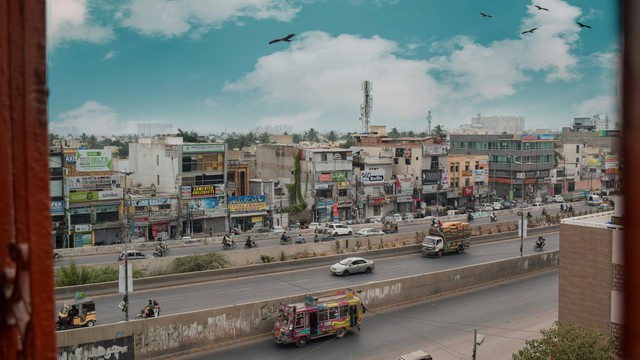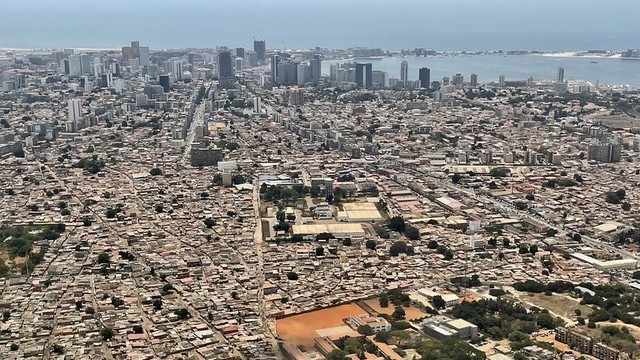The often forgotten role of small and intermediate urban centres
Much of the world’s urban population lives and works outside large cities, yet often the economic, political and social importance of these urban centres, including their support to rural development and policy innovation, is given too little attention.


Ilo, a port city in Perú, is an example of small urban centres with mayors looking to innovate in ways they would not be able to do in larger and politically high-profile cities (Photo: Jim McIntosh via Flickr, CC0 1.0)
Whether described as small and intermediate urban centres, or secondary cities, when the populations of urban centres that are not large cities are aggregated, in most nations, they represent a large share of the national total (and of the urban population).
They make important contributions to the national economy and to public and private service provision for residents and enterprises in and around them.
Many have importance as service centres for agriculture, fishing or mining. Many are railways and/or road transport hubs; some are river or seaports. Some are tourist centres that may serve local, national and/or international tourism. Others owe their existence to changes in transport systems or are becoming commuter towns for larger urban centres.
Also significant are the local political structures of these urban centres, including the quality and accountability of mayors and their resource base.
There are many examples of small and intermediate urban centres that have innovative mayors — seizing the chance to do in these centres what they might not be able to do in a more politically high-profile large city. This is part of the story for the transformation of Ilo in Perú, for example; many of the urban centres that have implemented participatory budgeting are of small and intermediate size.
But despite their diversity, incorrect generalisations are made about smaller urban centres – that they are growing more rapidly than large cities, for instance. But what is puzzling is, if you look at all the urban centres in a nation and how their census populations change, there will usually be a range of intermediate urban centres growing faster than large cities and a range growing slower.
In any case, large cities also have very varied population growth rates. And we measure population growth rather than the annual increment in the population; if you ranked urban centres by the increment in their population by year, almost all would be large cities.
Urban centres as the backbone of a nation’s economy
Urban systems and all the urban centres they include are essentially the spatial framework and infrastructure backbone for investment, development and governance. Small and intermediate urban centres have critical roles in these urban systems.
Maps showing urban centres and their interconnections are the spatial maps not only of any nation’s economy but also of service centres, of consumption and expenditure. Maps of public and other essential services: health care, postal services, telephones, the internet, also show the importance of smaller urban centres.
Many small and intermediate urban centres are influenced by their proximity to large cities and may over time have experienced changes in labour markets, land and housing opportunities (both formal and informal).
Drawing the line between large and smaller cities
Given this, by what criteria do we draw the line separating small and intermediate urban centres from large cities? Population size is the most common criterion but should the upper limit for intermediate urban centres be set separately for each nation or be the same for all nations?
In some large population nations, for example, there are cities with a million plus inhabitants, which could be considered intermediate, but this does not work in most countries.
Intermediate urban centres can be defined by what is left once ‘large’ cities have been defined. Many studies originally set this line at half a million inhabitants or, later, 300,000 people, the reason being that the UN data on urbanisation has population statistics for urban centres down to this size.
But many nations with large urban populations have some urban centres with more than 300,000 inhabitants (and are thus seen as large cities) that would fall into the intermediate urban centre category if other definitions were used (for instance, share in a nation’s GDP).
Perhaps they should be intermediate within the government structure of administrative rank? If they are seen as a category within government structures or seen as cities of a particular size, they will be regarded as having comparable characteristics and be supported by a standard programme of support.
So all these urban centres might get the same policy rather than one tailored to the needs of their inhabitants and government.
And there is the question of when a small urban centre becomes an intermediate urban centre? How do we draw the line separating intermediate urban centres from smaller, generally less important urban centres, often overlooked or excluded? In our research no line was drawn: we included all urban centres, many with less than 20,000 inhabitants.
Decentralisation could be another framework for supporting urban centres that are not large cities. It is often better because needs, priorities and approaches should be more grounded in the local, and more accountable to residents.
National support programmes for small and intermediate urban centres usually have a standard set of interventions they will support, many of which ill-match local needs and priorities and are far from local accountability. Witness the number of industrial parks built in intermediate urban centres that attract little new investment.
In the end, there is general agreement that cities and other urban centres that are not ‘large’ have not been given the attention they merit. Many of the examples of innovative small and intermediate urban centres come from nations where these were supported through decentralisation and democratic governance rather than special programmes for smaller urban centres.
This is an issue to which this blog series will return.



